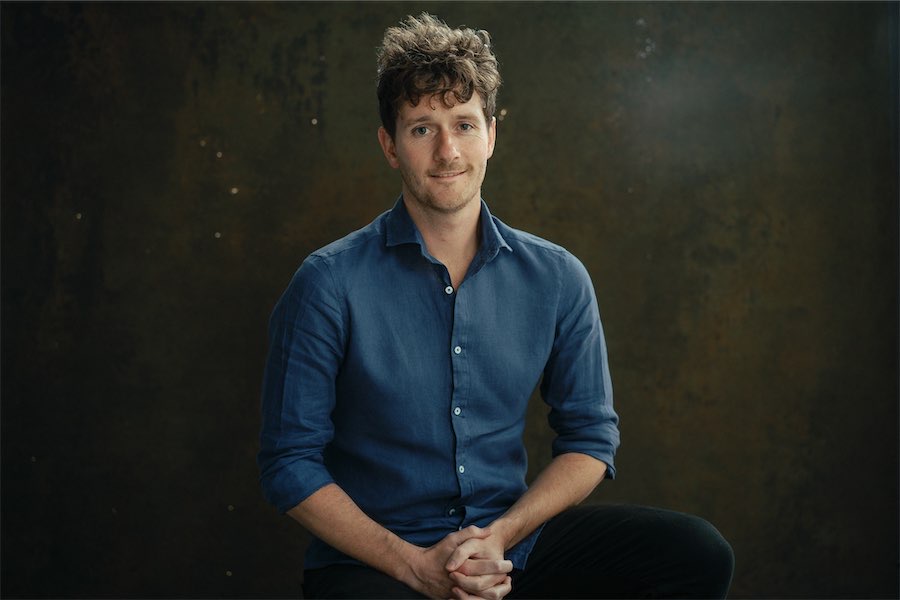
Music / “Hope. Struggle. Victory.”, National Capital Orchestra. At Albert Hall, September 24. Reviewed by HELEN MUSA.
THIS ambitious concert was presided over by music director Louis Sharpe, who was affable and communicative with his audience, stressing the community aspect of its work, although in reality presenting music of great complexity.
The afternoon began with a Canberra premiere of Melbourne composer Nat Bartsch’s 202 composition “Hope”, which got the concert off to a slow start, conjuring up as it does the grief and loss experienced in the Victorian Black Summer bushfires, but also allowing for exciting work from the horns and brass, of which we were to see far more.
Originally scored for piano, string quartet and electronics, it was later re-scored for full orchestra, enabling an evocative fade-out to light percussive effects in the end.

The centrepiece of the day was Shostakovich’s cello Concerto No. 1 in E flat major, composed after Stalin’s death.
The soloist was the brilliant young ANU cello (and mathematics and physics) student, James Monro, who has been winning prizes and accolades all around town this year.
The opening allegretto saw a lively exchange of cello and flute, then the full orchestra in what the composer himself described accurately as a “jocular” march.
The second movement features a sad mournful song then a sweeter one before Monro captured the increasingly violent and despairing nature of the music, which finished on a fine and delicate note with Kathleen Loh on the celeste and light strings in the background.
The third movement of the concerto provided an opportunity for Monro to play unaccompanied. Sharpe had joked this gave the orchestra a break, but there was no break for Monro. His use of plucked strings and pregnant silences spoke eloquently but the movement worked up to become wild and frenetic.
The final allegro con moto, where the full orchestra returned, featured some brilliant horn work before Monro brought the work to a dazzling conclusion, to wild acclaim.
If you thought the Shostakovich was difficult enough for a community orchestra, Tchaikovsky Symphony Number 4 in F Minor was, if anything, even more difficult and had, Sharpe noted, more notes on the page to anything he could recollect – he was just glad he didn’t have to play them all.
This symphony is sometimes called the “Fate” symphony, because of its pervasive opening fate theme, well-described by the composer as reflecting on “that fateful force which prevents the impulse to happiness from attaining its goal”. That made for an ominous opening where the brass and horns dominated.
There is exceptional variety in the first movement, which has four different tempos – andante sostenuto, moderato con anima, moderato assai and quasi-andante – “allegro vivo”– and tuneful elements that play against the gloom. It was anything but bleak and came to a splendid, full-bodied conclusion.
The second movement, andantino in modo di canzona, captures an elegiac mood through the plaintive oboe, a theme which returns towards the end.
The scherzo gave the strings an extended opportunity to show their pizzicato skills, then the brass entered with a contrasting military-style march before the movement concluded with what the Tchaikovsky said was a drunken dance. The feeling of this movement was lighter and more joyous than the other sections, and the music is highly descriptive.
The final movement, the allegro con fuoco, returns to a dramatic mode with a huge brass opening, but there is a change of mood when the “Fate” theme returns in the woodwinds. But this final movement in no way dampened the spirit as the thoroughly enjoyable concert ended on a triumphal, hopeful note.
Who can be trusted?
In a world of spin and confusion, there’s never been a more important time to support independent journalism in Canberra.
If you trust our work online and want to enforce the power of independent voices, I invite you to make a small contribution.
Every dollar of support is invested back into our journalism to help keep citynews.com.au strong and free.
Thank you,
Ian Meikle, editor




Leave a Reply